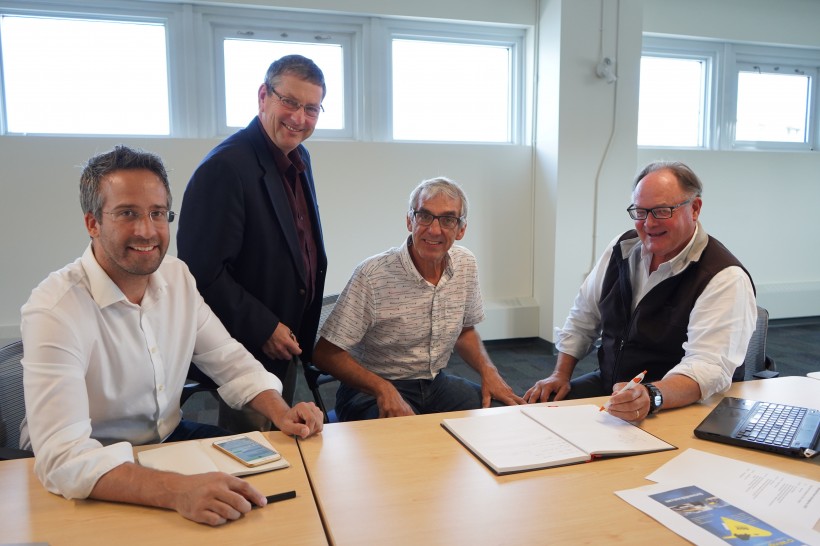Dartmouth Ocean Technologies, or DOT, has moved into new office and manufacturing space on Brownlow Avenue in Dartmouth, as CEO Arnold Furlong looks to scale the company in response to strong demand for its environmental DNA monitoring tech.
One driver behind DOT’s expansion plans is a $1 million deal with the Department of National Defence to develop an environmental DNA, or eDNA, monitoring device to complement the company’s existing sampler device, which so far requires material be sent to a lab for analysis.
Environmental DNA refers to the process of using trace amounts of genetic material left behind by the organisms in a body of water to determine which flora and fauna are present. It represents a comparatively recent business track for DOT, but Furlong said in an interview that the technology is the company’s fastest-growing vertical.
“It’s a big move for us, as a startup that’s been developing technology for the last four years and a bit,” said Furlong, whose team now includes 10 people. “We’re starting to sell product around the globe, and we’ve just hired a couple more employees, so we need more space for both technology development and production work.”
Founded in 2019 by serial entrepreneur Furlong and Director of Innovation Roger Race, a biologist and engineer, DOT was originally created to build a fibreglass device dubbed the V-Wing, which is a wing that can be outfitted with sensors and towed behind a boat. The company now also sells alkalinity sensors, including a recent sales agreement with the University of Hawaii.
A key market for DOT is scientific research, Furlong added, with Fisheries and Oceans Canada having bought six of the roughly 20 environmental DNA samplers Furlong’s team has sold so far.
“It will tell you, ‘There’s whales, there’s dolphins, there’s fish, there’s kelp, there’s people, bacteria,' it will give you the whole genome picture,” he said, adding that another, simpler test offers the ability to check for the presence of specific organisms, if a researcher already knows what they are looking for.
Also emerging as a significant customer base are wind energy companies looking to track how wind farms impact marine biodiversity. Research from groups such as Britain’s Plymouth Marine Laboratory suggests the structures may act as artificial reefs, and with biodiversity tax credits becoming a persistent talking point in European politics, Furlong said renewable energy providers on the continent have shown particular interest in DOT’s offerings.
“As an example, a country might want to know the biodiversity before it puts a stretch of coastline up for lease,” he said. “A survey company might be hired to monitor what’s going on along that stretch of coastline if the energy company decides to go forward with putting a wind energy site in place.
“And ultimately, when it’s time to tear that wind energy site down in 30 or 40 years, is there more biodiversity after the fact, or is there less biodiversity?”










